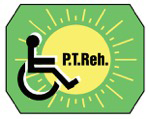


|
Current issue
Archive
Manuscripts accepted
About the journal
Editorial board
Reviewers
Abstracting and indexing
Contact
Instructions for authors
Publication charge
Ethical standards and procedures
Editorial System
Submit your Manuscript
|
2/2024
vol. 38 abstract:
Original paper
Combined effect of core stability and dynamic resistance exercises on bone mineral density in postmenopausal women
Advances in Rehabilitation, 2024, 38(2), 21–29
Online publish date: 2024/07/09
View
full text
Get citation
ENW EndNote
BIB JabRef, Mendeley
RIS Papers, Reference Manager, RefWorks, Zotero
AMA
APA
Chicago
Harvard
MLA
Vancouver
Introduction
Osteoporosis is common among postmenopausal women, and can affect their health and quality of life. However, it can be managed by physical activity. The present study aims to investigate the combined effect of core stability and dynamic resistive exercises on bone mineral density (BMD) in postmenopausal women. Material and methods Sixty postmenopausal women diagnosed with osteoporosis, age 50 to 60, BMI < 30 kg/m2, were randomly divided into two equal groups: the study group received core stability and dynamic resistance exercise (two sessions per week) in addition to 70 mg Alendronate (one tablet) per week for four months, while the control group only received 70 mg Alendronate (one tablet) per week (n = 30 each group). Both groups were assessed for BMD (dual-energy x-ray absorptiometry; DEXA), and quality of life (Oswestry Disability Index; ODI), both pre- and post-treatment. Results Both groups demonstrated a significantly greater bone mineral density in the lumbar spine and left femoral neck and improved quality of life post-treatment compared to pre-treatment (p < 0.001). However, comparing groups, the study group demonstrated significantly higher lumbar spine (Z value= -5.588) and left femoral neck bone mineral density (Z value = -4.794), and significantly lower ODI score (F value= 243.686), compared to the control group (p < 0.001). Conclusions Core stability and dynamic resistance exercise appear to be safe and effective methods in the treatment of osteoporosis in post-menopausal women. keywords:
bone density, core stability, post menopausal osteoporosis, resistance training |
    |